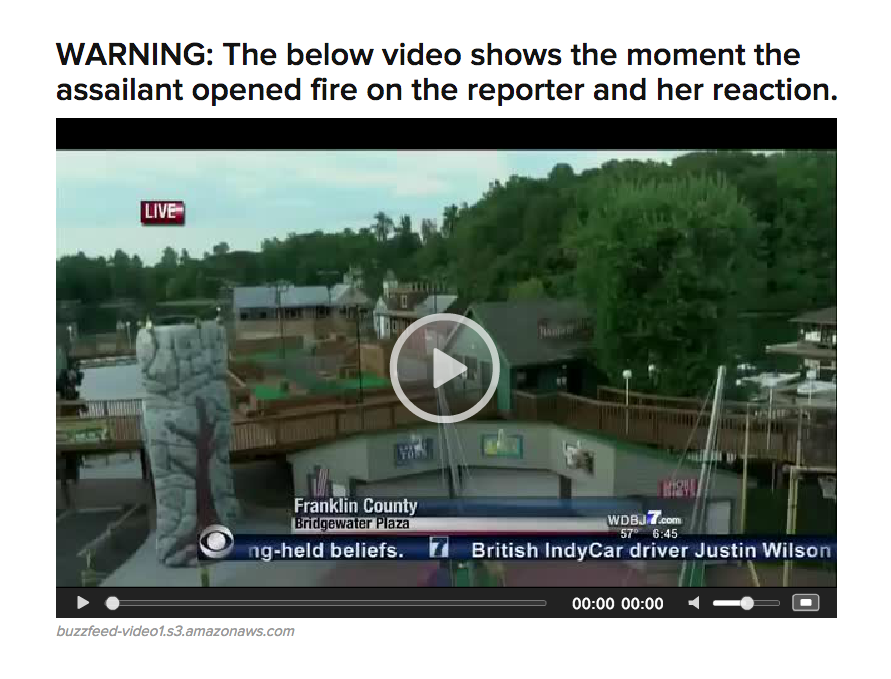The on-air shooting of WDBJ reporter Alison Parker and videographer Adam Ward has sparked a debate – should publications be sharing the graphic video of the shooting?
Al Tompkins of Poynter says that “it depends.”
It depends on why you are using the video and how you will use it and how long you will use it.
When the shooting first happened, Jacob Wycoff, a meteorologist for Weather Bug, tweeted video footage from the live broadcast. It got several retweets and was shared by BuzzFeed.
“I think the situation was newsworthy and therefore posted the video,” Wycoff said.
Minutes later, he removed it.
“I realized it was best to take it down. I have friends on the WDBJ weather team and didn’t want to contribute to any of their pain,” he told Poynter via Facebook.
The other side of the argument that’s circulating on social media is that many news outlets showed the Walter Scott shooting on loop. How do we distinguish the newsworthiness in the two cases?
In this particular case, two videos have surfaced – one is the footage from the live broadcast, and the second is a video that the suspect posted on Facebook and Twitter. Both Facebook and Twitter removed the second video shortly and suspended the respective accounts.
Facebook community standards have a “Criminal Activity” section that states: “We also prohibit you from celebrating any crimes you’ve committed.”
However, the video from the live broadcast is something that continues to circulate on both television and online. Here’s how some news organizations have approached the story:
BuzzFeed chose to upload the video on their own servers. Other publications, such as The Guardian, have decided to not share the video.
“Given the disturbing content of the videos emerging from Virginia on Wednesday, we made a decision not to run them on our site or social media channels,” said a spokesperson for The Guardian. “Amplifying or sharing such footage would be insensitive to the victims’ families and distressing to those viewing it.”
The publication is using stills from the video of the reporter before the shooting and that of the shooter. Both of these have been considered to be evidence in this case.
Earlier this morning, CNN announced that it would show the video once every hour. The news organization published it online with a warning. The New York Times has not shared the video but did link to a YouTube version of it in their main story.
Both Mic and CNN have decided to use the first video, but have refrained from using the video posted by the suspect on Facebook and Twitter.
Mic outlines these difficult decisions in their editorial handbook:
Mic stories have a responsibility to address hard and complicated real-world events. Sometimes this means figuring out when it’s appropriate to share controversial or painful material, whether it’s a provocative political cartoon or upsetting video. Think about these three questions when you consider whether to include that material:
Does the reader need to see this material in order to understand the story?
Does omitting this material do a disservice to the reality on the ground?
Does Mic’s story punch up? That is, does our reporting frame this material in the smartest, least exploitive way?
According to BuzzFeed, the approach on publishing the video comes from a previous stand of “not sanitizing the Internet” when the video of journalist Jim Foley’s beheading by ISIS was circulating on the Internet:
BuzzFeed initially decided to link to the beheading video on YouTube, but then the video was taken down. “We don’t want to sanitize the Internet,” (BuzzFeed Deputy Editor-In-Chief Shani Hilton) said. “It’s there on the Internet, our audience is on the Internet, so to pretend like there’s some artificial wall between our audience and the raw content, it seems a little silly to me.”
Related: Covering Your Own Story: A Conversation with WDBJ Staff







